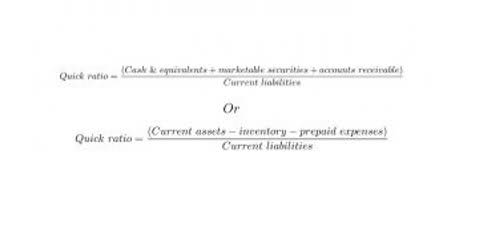
It’s a concise way to denote large amounts without taking up a lot of space on the page or screen. It’s also common to see K used for 1,000 and B for a billion. To avoid confusion, use any and all abbreviations consistently throughout all your financial records.
What Does ‘MM’ Mean in Accounting?
- These figures have values of 1, 5, 10, 50, 100, 500, and 1,000.
- On the other hand, “MM” stands for millions, a convention that has gained widespread acceptance in financial reporting and analysis.
- The cardinal number is automatically recognized when using M or MM in accounting.
- The use of MM to represent a million originated from the Roman numeral system, where “M” stands for thousand.
- M means a thousand, so MM is the sum if you multiply M by M, or 1,000 multiplied by itself equals 1,000,000.
- If you have to spend time counting how many zeroes are after a number to understand the full amount, it’ll take extra time to understand what is being communicated to you by an accountant.
However, it’s important to note that it may be less known in areas where the use of Roman numerals is not common and in non-English speaking countries who may use other abbreviations. If you had a commercial property valued at $92 million, a Retail Accounting modern writer would likely abbreviate the expression by saying it was worth $92M. In accounting and financial analysis terms, we know that reads as 92 thousand dollars, but the context allows us to understand the expression’s intent. The term “MM” originates from the Roman numeral M, which stands for one thousand. It is commonly used in financial documents, accounting, and stock market where space is a concern.

Words with Fascinating Histories
In some European countries, for example, “M” is used to denote millions, which can lead to confusion if not clearly defined. This underscores the importance of context and clarity in financial documentation. When preparing reports for an international audience, it is advisable to specify the notation used to avoid any potential misunderstandings. Moreover, the use of “MM” aligns with the principles of transparency and comparability advocated by international accounting standards. Organizations like the International Financial Reporting Standards (IFRS) emphasize the need for consistent and comparable financial statements. By adopting “MM,” companies can ensure that their financial reports meet these standards, enhancing their credibility and attractiveness to global investors.

What does MM and M mean in dollars?

It also helps professionals focus on key insights without getting lost in numerical details. As finance becomes more globalized, MM remains a valuable tool for efficient communication and understanding across industries. While you can make MM stand for millions of anything, it’s important that the reader knows whether you’re talking about dollars, euros, units shipped, etc. If, say, you use it for both units and dollars in accounting the same document, separate the different categories so your readers don’t get confused.
- Once you get above that amount, you’d say billion or trillion instead of using the numbers.
- This guide will explore how the notation should be used, as well as alternative symbols that are used in practice.
- Here’s a fun example to understand why small units are important.
- Additionally, MM minimizes errors when working with complex data, enhancing accuracy.
- That letter isn’t Greek or Roman, but the average reader would likely understand the concept.
- The millimeter, often abbreviated as “mm,” is a unit of length in the metric system, and it plays a crucial role in various fields, from engineering and architecture to everyday life.
Frequently Asked Questions

Although different accountants have adopted Roman and Greek traditions (or transitioned to modern abbreviations), context is what mm meaning unlocks the knowledge needed to understand the term. Most abbreviations used for large cash sums today come from ancient Greek and Roman societies. We still use Roman numerals for some accounting methods, while large figures are designated by the Greek alphabetic equivalent of the specific term. The term enables clarity and consistency, reducing the risk of misunderstandings due to different interpretations of number notation. In various aspects of finance such as budgeting, financial analysis, reporting, and forecasting, the use of MM aids in ensuring accuracy and precision.


Deixe um comentário